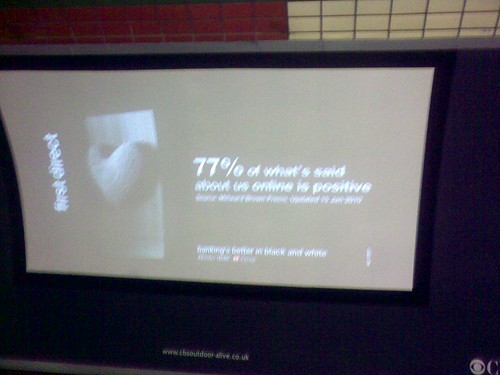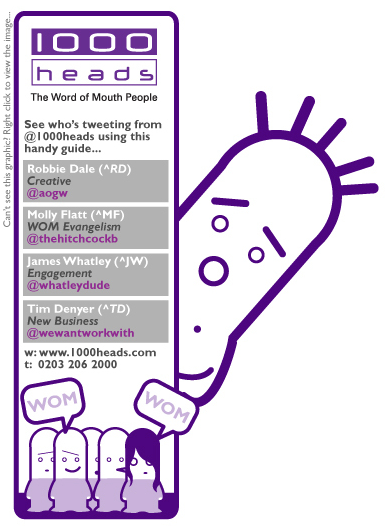There’s an ongoing debate here at 1000heads HQ at the moment about how we can continually ‘disrupt the norm’ in fun and interesting ways for the benefits of our clients.
This article ‘Why effective word of mouth disrupts schemas‘ is to blame. For the sake of brevity I’m only going to pull one quote from the piece (which really is worth a click and read by the way), as follows:
“Word-of-mouth on brands uses these same cognitive principles. Consumers talk about brands when we disrupt a schema. They talk when we give them a piece of surprise that does not fit inside their mental model.”
I spotted a good visual example of this over the weekend with the latest television advert from DIY specialists, Homebase.
Annoyingly, the only place you can view it online won’t let me actually embed the video – sigh – however from the image below you can get the idea.
The premise is simple, while decorating what looks like a London Underground escalator tunnel, the posters and tools used are priced and demo’d. The end result can be seen with the closing shot; a fantastically decorated public space, that not only looks amazing but also – if you saw it in real life – would certainly get you talking…
But that’s where we think that the whole Homebase campaign could do with some WOM. The London Underground effort isn’t the only space that they’ve disrupted, the other ads include decorating outdoor ads as well as public swimming pools.
Sticking to our We Want Work With principles, if we were working with Homebase then we’d have to push for making some of these above the line ideas and making them real.
Seeing your local underground station kitted out like this certainly doesn’t fit in with ‘the norm’ and – a few logistic issues aside – would certainly get people talking
Do something different.
Disrupt the norm.



